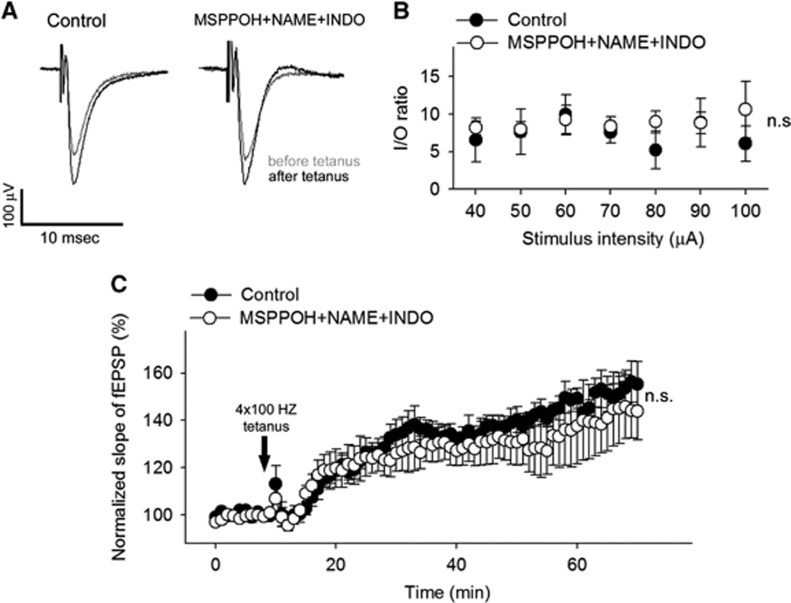Figure 4.
Treatment with MSPPOH+NAME+INDO does not affect synaptic function. (A) Original recordings showing the effects of treatment with MSPPOH+NAME+INDO on field excitatory postsynaptic potential (fEPSP) in the dentate gyrus in response to the stimulation of the perforant pathway (to 50 μA) on hippocampal brain slices before (10 minutes) and 1 hour after (70 minutes) 4 × 100 Hz tetanus. (B) Ratio of the evoked EPSP responses and the presynaptic fiber volley (I/O ratio) as a function of stimulus intensity in the dentate gyrus of hippocampal slices. Data are mean±s.e.m. (control, n=11; MSPPOH+NAME+INDO treated, n=7; P=0.78). (C) Long-term potentiation shown as change of fEPSP slope after a 4 × 100 Hz tetanic stimulus in the dentate gyrus of the hippocampus. Data are normalized to baseline responses and depicted as mean±s.e.m. (control, n=11; MSPPOH+NAME+INDO treated, n=7; P=0.93). INDO, indomethacin; MSPPOH, N-(methylsulfonyl)-2-(2-propynyloxy)-benzenehexanamide; l-NAME, l-NG-Nitroarginine methyl ester.

